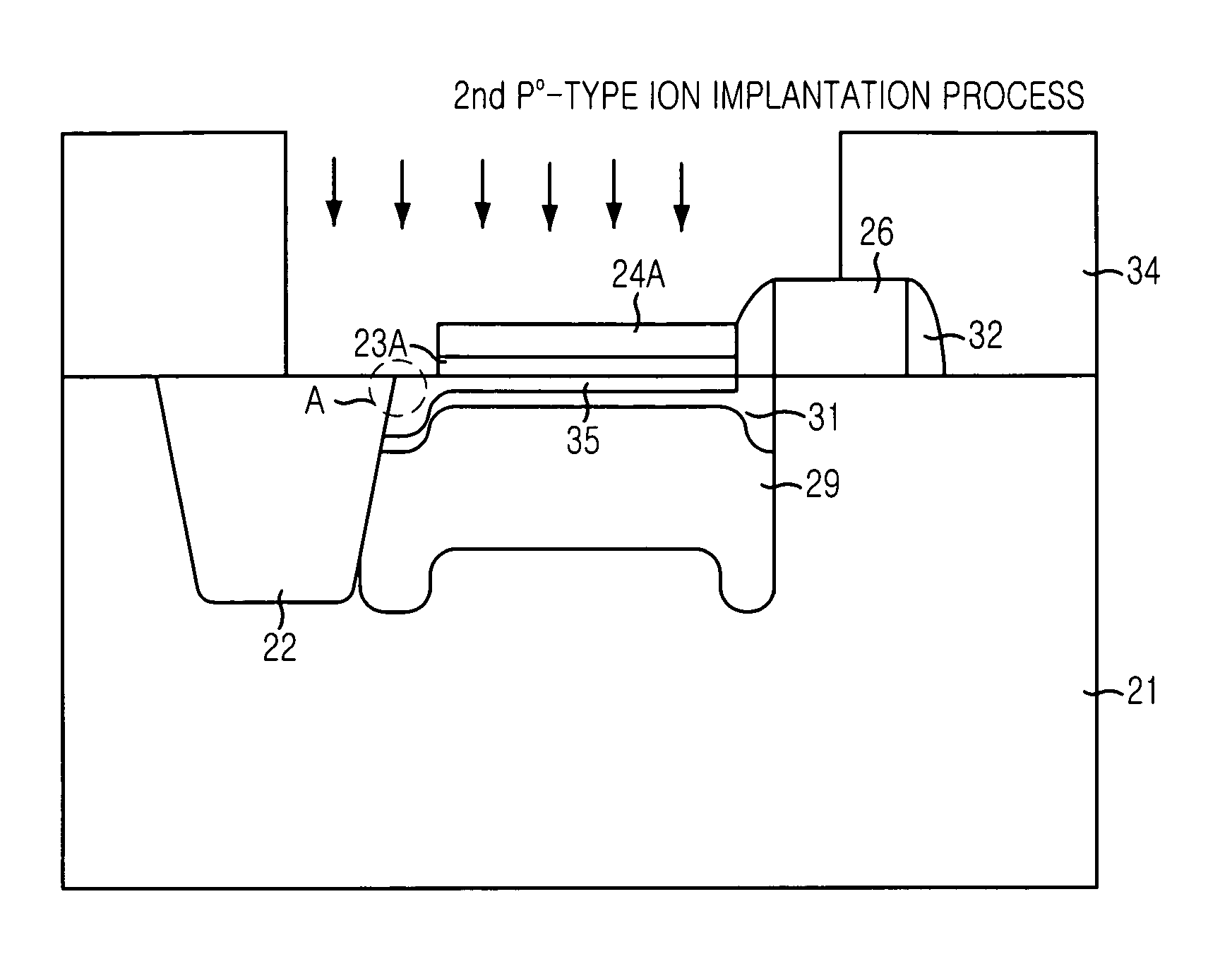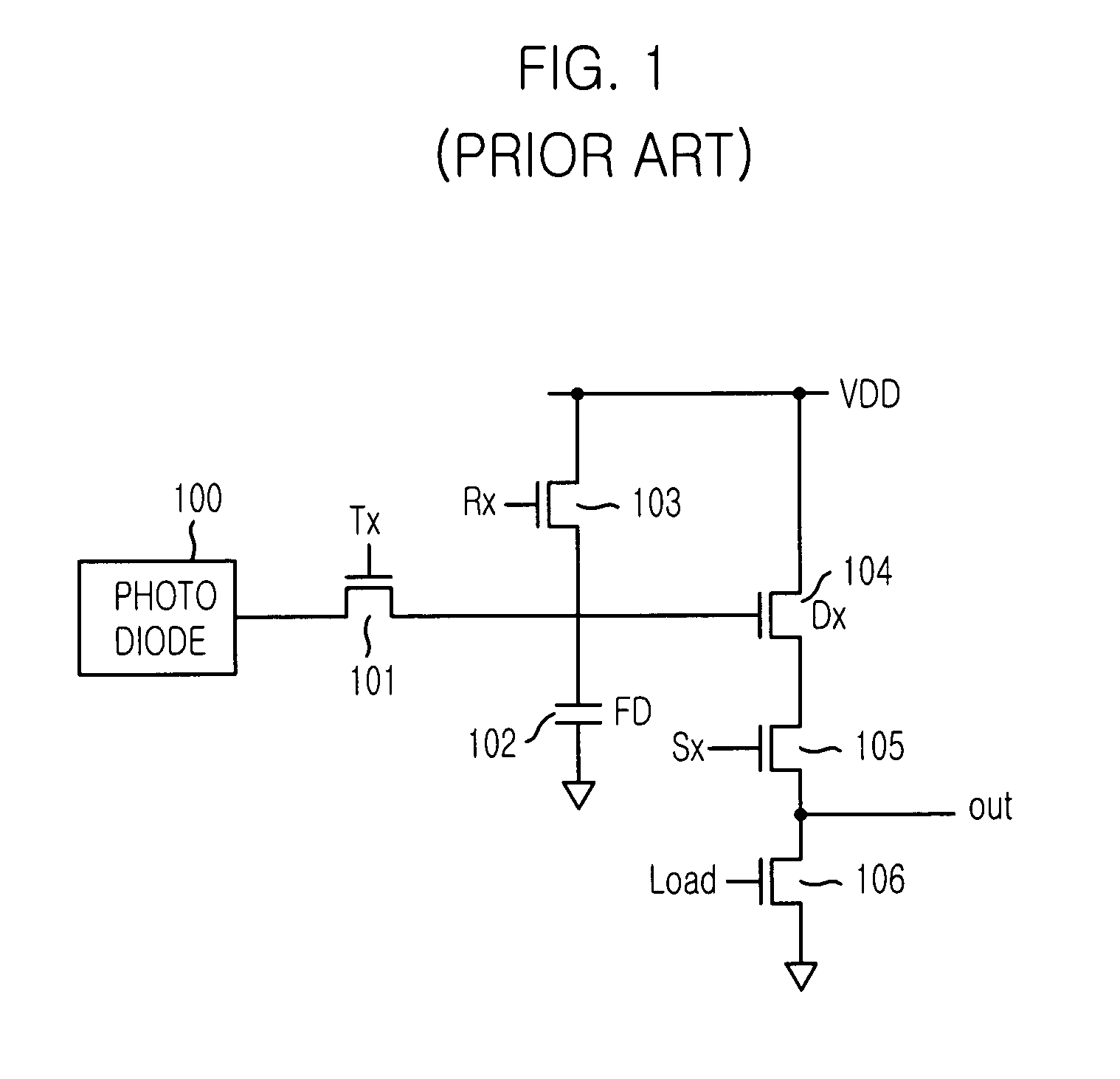Method and fabricating complementary metal-oxide semiconductor image sensor with reduced etch damage
a technology of complementary metal-oxide semiconductors and image sensors, which is applied in the field of can solve the problems of affecting the performance of the complementary metal-oxide semiconductor image sensors, and still being disadvantageous in the described convention methods, so as to improve the low light level sensitivity, improve the sensitivity, and prevent the effect of device characteristics from being degraded
- Summary
- Abstract
- Description
- Claims
- Application Information
AI Technical Summary
Benefits of technology
Problems solved by technology
Method used
Image
Examples
Embodiment Construction
[0045]A method for fabricating a complementary metal-oxide semiconductor (CMOS) image sensor with reduced etch damages in accordance with a preferred embodiment of the present invention will be described in detail with reference to the accompanying drawings, which is set forth hereinafter.
[0046]FIG. 4A is a cross-sectional view showing a substrate structure in a CMOS image sensor in accordance with a preferred embodiment of the present invention.
[0047]As shown, a device isolation layer 22 for defining an active region and a field region is formed in a substrate 21. At this time, it is also possible to use a stacked substrate structure including a substrate with high concentration and an epitaxial layer with low concentration.
[0048]If the above stacked substrate structure, obtained by forming the epitaxial layer with low concentration on the substrate with high concentration, is employed, a depletion layer of a photodiode formed in the epitaxial layer becomes deeper, thereby increasi...
PUM
 Login to View More
Login to View More Abstract
Description
Claims
Application Information
 Login to View More
Login to View More - R&D
- Intellectual Property
- Life Sciences
- Materials
- Tech Scout
- Unparalleled Data Quality
- Higher Quality Content
- 60% Fewer Hallucinations
Browse by: Latest US Patents, China's latest patents, Technical Efficacy Thesaurus, Application Domain, Technology Topic, Popular Technical Reports.
© 2025 PatSnap. All rights reserved.Legal|Privacy policy|Modern Slavery Act Transparency Statement|Sitemap|About US| Contact US: help@patsnap.com



